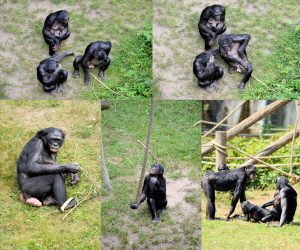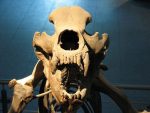
Well, there are several things that makes us different from other mammals – although perhaps fewer than one might think. We are not unique in using tools, in fact we discover more animals that use tools all the time – even fish! We pride ourselves on being a “moral animal”, however fairness, reciprocity, empathy and cooperation have been demonstrated in apes and monkeys. Genetically we differ by only 1.09% from gorillas, 1.14% from chimpanzees, 2.46% from Old World monkeys and we share 50% of our DNA with bananas!

Recent research has demonstrated one of the ways that we are unique and this research is being used to help us to understand our human lineage, as well as giving us new insights into some diseases, such as cancer. The key to this discussion is a set of complex sugar chains (or carbohydrates), called glycans, which occur on the surface of cells. In particular, a glycan called Neu5Gc. It seems that at some point in the distant past, the malaria parasite used this glycan to anchor itself to the cells of primates and infect them with malaria, and human ancestors responded by losing the glycan, thus becoming immune to malaria. Unfortunately for us, a new type of malaria found a new glycan to attach itself to (this one is called Neu5Ac), which meant that humans could catch the new strain of malaria. This explains why humans are immune to the strains of malaria which affect great apes, such as chimpanzees, but are susceptible to strains of malaria which don’t affect the apes.
Humans became almost unique amongst mammals in not having the glycan Neu5Gc. It is thought that this mutation occurred between 2 and 3 million years ago and might have contributed to humans developing their own distinct lineage. Part of the glycan also becomes integrated as a molecule in bone, which gave researches hope that they might be able to find traces of the molecule from Neu5Gc in fossil bones. Whilst we have been successful in extracting ancient DNA from Neanderthal bones as old as 430,000 years and from horse bones as old as 700,000 years, fossils that are millions of years old have not been able to yield enough viable DNA using current techniques.

So researcher Ajit Varki, Distinguished Professor of Medicine and Cellular and Molecular Medicine at UC San Diego School of Medicine, started with 50,000 year old bones from a cave bear, from which they were able to extract the molecule. Varki then approached Maeve Leakey, Director of Field Research at the Turkana Basin Institute, who gave them a fragment of bone from a 4 million year old buffalo-like animal, found in the same layer as some hominin fossils. Once again the researchers were able to extract the molecule left in the bone by Nue5Gc. It is now hoped that they will be able to test fossil hominid bones in order to see which ones lacked Neu5Gc (and are thus likely to be our direct ancestors) and which ones had it.
Modern humans usually do have trace amounts of Neu5Gc, thought to enter our bodies from eating the meat of animals which have the glycan. Our bodies produce a slight immune response to the glycan, which might aggravate diseases such as cancer, opening new avenues for research and proving how research in one area of science, such as paleoanthropology, can have effects in other areas, such as medicine. It might therefore also be possible to see how much meat our ancestors included in their diets – always a controversial topic.


History and Geography are no longer boring and dry, and the material provides a wide variety of topics.
Laura Davidson, Teacher